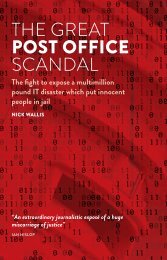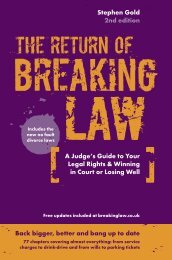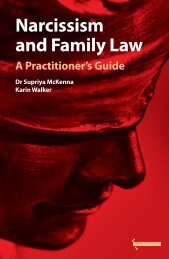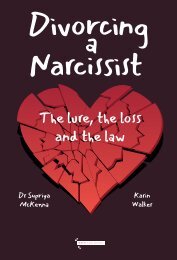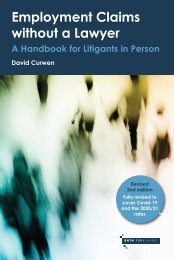Insolvency Made Clear: A Guide for Debtors
Plain English, practical guidance for anyone facing demands over a debt they are struggling to pay.
Plain English, practical guidance for anyone facing demands over a debt they are struggling to pay.
Create successful ePaper yourself
Turn your PDF publications into a flip-book with our unique Google optimized e-Paper software.
<strong>Insolvency</strong> Law <strong>Made</strong> <strong>Clear</strong> – A <strong>Guide</strong> For <strong>Debtors</strong><br />
2.5 Review of the conduct of the bankrupt<br />
Another aspect of the Trustee’s role is to examine the conduct of the bankrupt<br />
and see if they have committed any bankruptcy offences. These relate to deliberately<br />
defrauding creditors and are examined in more detail in Chapter 7.<br />
The Trustee is likely to review the bank accounts of the bankrupt to look <strong>for</strong><br />
unusual transactions, and they are likely to interview the bankrupt again if<br />
they find anything suspicious. It is a criminal offence <strong>for</strong> the bankrupt to lie to<br />
the Trustee. The Trustee can also apply to the court to summon the bankrupt’s<br />
spouse or business partners to give them evidence about the bankrupt’s affairs.<br />
A Trustee is likely to contact any lawyers instructed by the bankrupt to be able to<br />
understand their affairs properly. Trustees are entitled to read private legal documents<br />
which no other person would be entitled to read. The only documents<br />
they do not have access to would relate to a claim the bankrupt might make<br />
against the Trustee themselves. Examinations are discussed in Paragraph 2.16.1.<br />
If the Trustee believes that the bankrupt has absconded or is about to, or is<br />
likely to remove or conceal important property or documents, the court may<br />
issue a warrant <strong>for</strong> the bankrupt’s arrest (s364 of the Act). The purpose is not<br />
to punish the bankrupt, but to compel them to comply with their obligations as<br />
a bankrupt.<br />
2.6 Increasing the asset pool<br />
A Trustee will have all the powers of the bankrupt to sue <strong>for</strong> debts owed to the<br />
bankrupt. If the bankrupt were themselves owed money by some third party,<br />
the Trustee would demand that it gets repaid. Creditors of the bankrupt will not<br />
escape paying because of the bankruptcy order, although the Trustee may strike<br />
a deal to ensure prompt payment of the debts owed.<br />
However, the powers of a Trustee go much further than those of the bankrupt.<br />
A Trustee can apply to the court to undo certain transactions. The two most<br />
common are:<br />
1. Transactions at an undervalue: s339 of the Act. Where the bankrupt has<br />
‘at a relevant time’ entered into a transaction at an undervalue, the Trustee<br />
can apply <strong>for</strong> an order <strong>for</strong> the court to restore the position to what it would<br />
have been had the transaction not happened. A transaction at an undervalue<br />
includes a gift, or when the amount received is significantly less than the<br />
value given by the bankrupt. An example of a transaction at an undervalue<br />
is when a car with a street value of £10,000 is sold <strong>for</strong> £5,000.<br />
The ‘value’ of an object is, in practice, subjective. A car may achieve<br />
£10,000 if the seller is diligent in finding a purchaser, but only £5,000 if<br />
20






